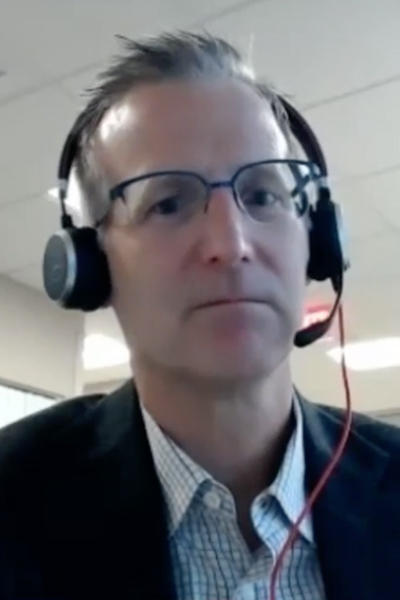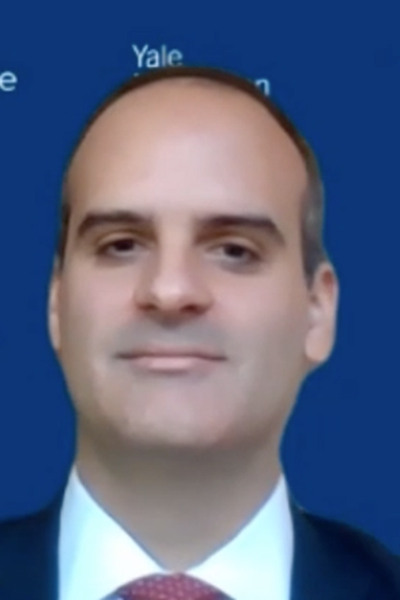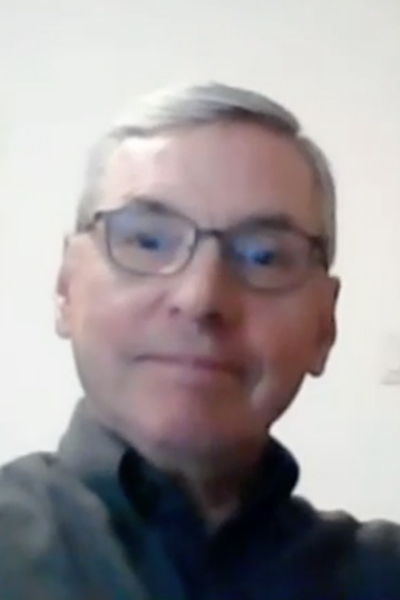For many years, telehealth was an available but underutilized option for health-care delivery. That changed abruptly with the arrival of SARS-CoV-2.

“The transformation that has been forced upon us with the onset of the COVID-19 pandemic has necessitated that we all rapidly innovate,” said Glenn VanOtteren, MD, FCCP, in the Sunday, October 18 session Tele-healthcare in Pulmonary and Critical Care Medicine – Current and Future Practice. The session will soon be available for on-demand viewing on the virtual CHEST 2020 meeting platform through January 18, 2021, for registered attendees.
Dr. VanOtteren, chief of the division of pulmonary, critical care, and sleep medicine at Spectrum Health, outlined the advantages to outpatient telehealth visits from both the patient and provider perspectives and the accelerated expansion of telemedicine within the Michigan health system where he works.
“With the arrival of the forsaken COVID-19 virus, our ambitious 3-year timeline to more broadly roll out telemedicine platforms was catapulted into a 3-week implementation,” he said.
Data from an EMR software application (Epic) shows a similar trajectory for institutions across the US, with nearly 50% of office visits conducted in the early period of the pandemic done virtually for all age groups except pediatric patients. It’s a trend Dr. VanOtteren expects to continue, calling it a “COVID[-19] win.”
With the arrival of the forsaken COVID-19 virus, our ambitious 3-year timeline to more broadly roll out telemedicine platforms was catapulted into a 3-week implementation.
“With the necessity created by the COVID-19 pandemic, successful health-care systems have migrated an increasing percentage of their clinical practices to a telehealth-driven model that is more patient-centered with improved access and convenience, more preventive in its principle, and more cost effective for both patient and health systems.”
The pandemic has redefined aspects of telehealth related to critical care, too.

Panelist John Kazianis, MD, medical director at InSight Tele ICU, Yale University School of Medicine, said in just one of the hospitals InSight works with, there was a 56% increase in patient volume during the COVID-19 surge earlier this year. During the same period, virtual interactions with patients increased tenfold.
Like Dr. VanOtteren, Dr. Kazianis predicts this expansion of remote care will endure. Tele-critical care, first conceived about 20 years ago as a solution to regional staffing shortages, also will continue to be provided around the clock and be seamlessly integrated into bedside practice following the COVID-19 pandemic, Dr. Kazianis forecasts, resulting in “more care being done locally and fewer interhospital transfers.”
How tele-health clinicians are incorporated into the bedside workflow is critical to the success of this virtual critical care, Dr. Kazianis contends: “I think it’s very important that the tele-intensivist be there when they’re needed and fall into the background when they’re not, and not step on the toes of the bedside team and be there to augment and support the care that they’re giving.”

Another panelist, Steve Peters, MD, FCCP, professor of medicine, physician of pulmonary and critical care, and chief medical information officer at the Mayo Clinic, reviewed telehealth billing and coding, including changes prompted by COVID-19. He also is the American College of Clinical Pharmacy advisor to the Current Procedural Terminology (CPT®) coding panel of the American Medical Association (AMA) and a member of the Joint American Thoracic Society (ATS)-CHEST Clinical Practice Committee.
“Effective in March of this year, during the public health emergency, CMS (Centers for Medicare & Medicaid Services) announced there would be payment for telehealth at the same rate as in person—really a revolutionary concept,” he said. “(Video visits) can now include things that were probably questioned relative to HIPPA previously—FaceTime, Zoom, or Skype, but not social media, not things like Facebook or TikTok.”
There is no established sunset on the public health emergency allowances regarding billing, and Dr. Peters expects professional societies will advocate for extending them indefinitely.





